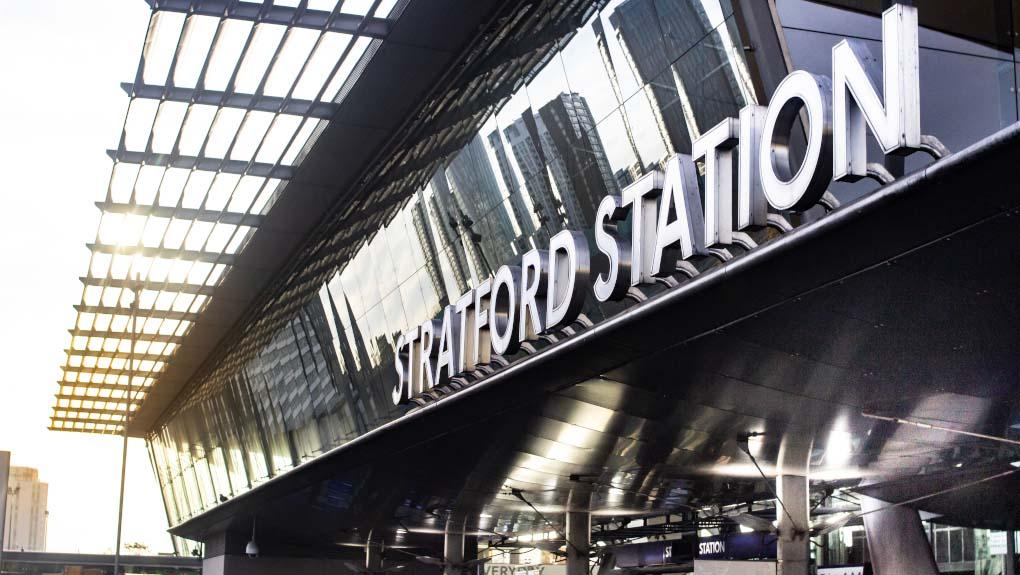
The numbers are revealed in the Office of Rail and Road’s (ORR) estimates of station usage statistics 2020-21, which include the annual total of passenger entries and exits at each of the 2,500+ stations in Great Britain.
Stratford recorded nearly 14 million entries and exits in 2020-21 (13,985,162) underlying its importance as a key London interchange to connect passengers with other transport routes.
It is the first time in 17 years that London Waterloo is not the most used station in Britain. The London station saw the biggest decrease in passenger usage, with 12.2 million entries and exits compared to the 86.9 million in 2019-20.
London’s railway stations dominate the top ten most used, with London Victoria also heavily relied on during the pandemic, with 13.8 million entries and exits, followed by London Bridge also with 13.8 million. London Liverpool Street (11.2 million) also made the top five most-used stations in Britain.
Highbury and Islington (8.7m), Clapham Junction (8.4m), Barking (6.7m) and East Croydon (6.7m) entered into the top 10 for the first time, replacing London Paddington, London Euston, London St Pancras International and London Kings Cross.
ORR’s figures also show Birmingham New Street as the only station outside of London that recorded more than 6 million entries and exits, with 7.4 million people travelling from or to the station in 2020-21.
Liverpool Lime Street (3.5m) and Cambridge (2.3m) were the only stations included in the top 10 most used stations outside of London that did not appear last year. These two stations replaced Gatwick Airport and Glasgow Queen Street.
Across Scotland, Glasgow Central remained the most used station with 5.3 million entries and exits, down from 32.5 million in 2019-20. Edinburgh (2.9m), Glasgow Queen Street (2.3m), Paisley Gilmour Street (982,530) and new entrant Partick (634,162) were also in the top 5 most used.
In Wales, Cardiff Central also remained the busiest station during 2020-21 but saw just under 2 million entries and exits compared to more than 12 million last year. Newport in South Wales (543,356), Cardiff Queen Street (472,914), Swansea (468,824) and Bridgend (321,576) completed the top 5 most used.
Only five railway stations in Great Britain had more than 10 million entries and exits in 2020-21 compared with 43 stations in 2019-20.
Nearly 200 railway stations across Britain had fewer than 1,000 entries and exits, with six recording no entries or exits during the last year as a result of services temporarily suspended at the majority of these stations due to the pandemic.
There were 18 stations with less than 20 and 59 with less than 100 recorded entries in 2020-21.
Last year’s least used station was Berney Arms (Norfolk, England) with 42 entries and exits. In 2020-21, the number of entries and exits at this station increased to 348, which was the biggest percentage increase of any station compared with the previous year.
Feras Alshaker, Director of Planning and Performance at the Office of Rail and Road said:
Notes to Editors
- Estimates of station usage statistics 2020-21: https://dataportal.orr.gov.uk/statistics/usage/estimates-of-station-usa…
- Britain’s railway was severely impacted by the pandemic last year. Numbers from the Office of Rail and Road show only 388 million journeys were made in 2020-21 (April to March) – down 78% and equates to 22.3% of the 1,739 million journeys made in 2019-20 – representing the lowest level of annual passenger usage since before the time series began in 1872.
- The six stations with no recorded entries and exits were Abererch (Gwynedd, Wales), Beasdale (Highland, Scotland), Llanbedr (Gwynedd, Wales), Sampford Courtenay (Devon, England), Stanlow & Thornton (Cheshire West and Chester, England) and Sugar Loaf (Powys, Wales).
- The Office of Rail and Road is the primary producer of official statistics for rail.

